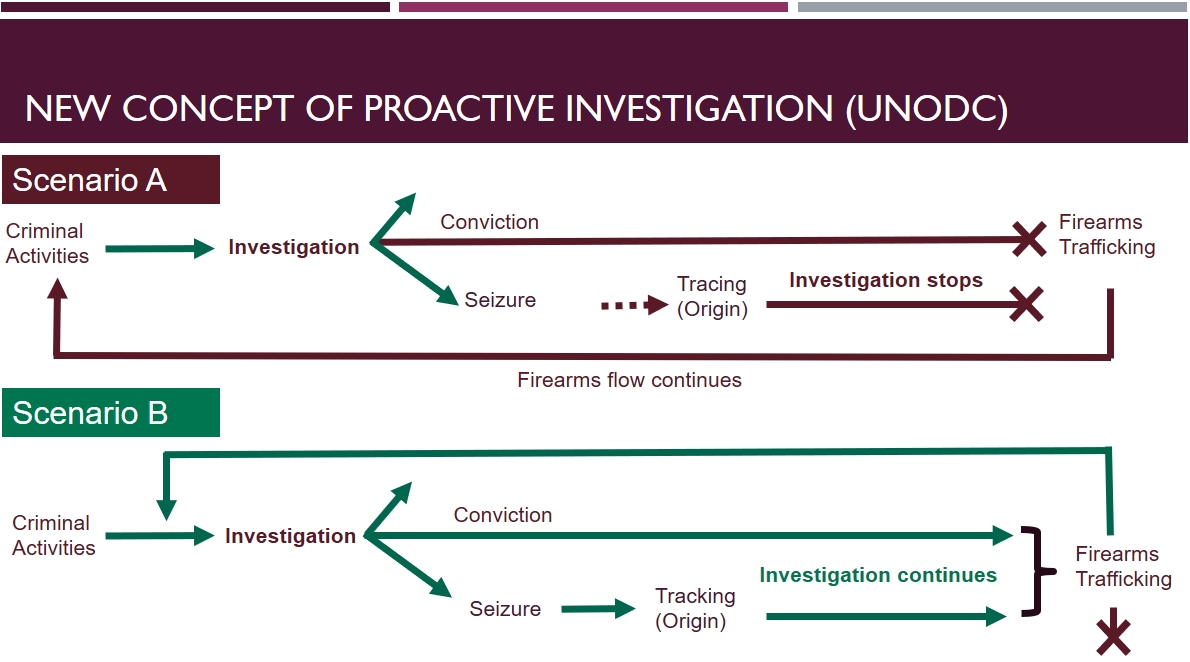In addition to understanding the classification of firearms, the typology and basic visual identification, your students will need to explore the nomenclature of firearms to understand the parts and how they operate.
Under the Firearms Protocol, the parts that are considered as essential to the operation of a firearm include (but are not limited to):
' any element or replacement element specifically designed for a firearm and essential to its operation, including a barrel, frame or receiver, slide or cylinder, bolt or breech block, and any device designed or adapted to diminish the sound caused by firing a firearm (…)'
There is a common view that also the Programme of Action on small arms and its International Tracing Instrument acknowledges, which is the importance of regulating and controlling parts and components. Some instruments use different terms but, basically, they refer to the same parts and components.
For example, the ECOWAS Convention on Small Arms and Light Weapons, their Ammunition and Other Related Materials, refers to parts and components as other related materials that include:
'All components, parts or spare parts for small arms or light weapons or ammunition necessary for its functioning; or any chemical substance serving as active material used as propelling or explosive agent.'
For the practitioner, key aspects of a firearm identification include the major components, including the working mechanism both external and internal.
Firearms can comprise hundreds of parts and components. The more common parts include the barrel, magazine, hand guard, pistol grip, trigger and the trigger guard. All firearms have a receiver, which is comprised of springs, levers and pistons.
It is important to differentiate between the key components of a firearm, and the other parts and components. The key components of a firearm are those that are essential for the proper functioning and identification of a firearm. Since replacement of these components can impact the proper identification of a firearm, their trading shall also be regulated.
A key part of any firearm is the barrel. The projectile or bullet (ordinary terminology) travels through the barrel by way of an explosive charge (propellant). The barrel is linked to a receiver, which houses the operable parts of the firearm, including a magazine which holds the ammunition. For example, changing of a firearm barrel will make impossible the identification of a bullet fired with the same weapon since the markings of the new barrel are different from the markings of the original barrel. Also, the new barrel may have a different serial number or no serial at all, this creating difficulty in the physical identification of the firearm.
By having access to various parts and components of firearms, criminals can build their own firearms by assembling the components, or they can use these components to modify or reactivate legally purchased firearms. Therefore, producing and trading of firearms parts and components shall fall under similar regulations as the firearms trading and production.
Below the description of the main firearms components is provided followed by general anatomies of firearms where these components can be identified and localized.
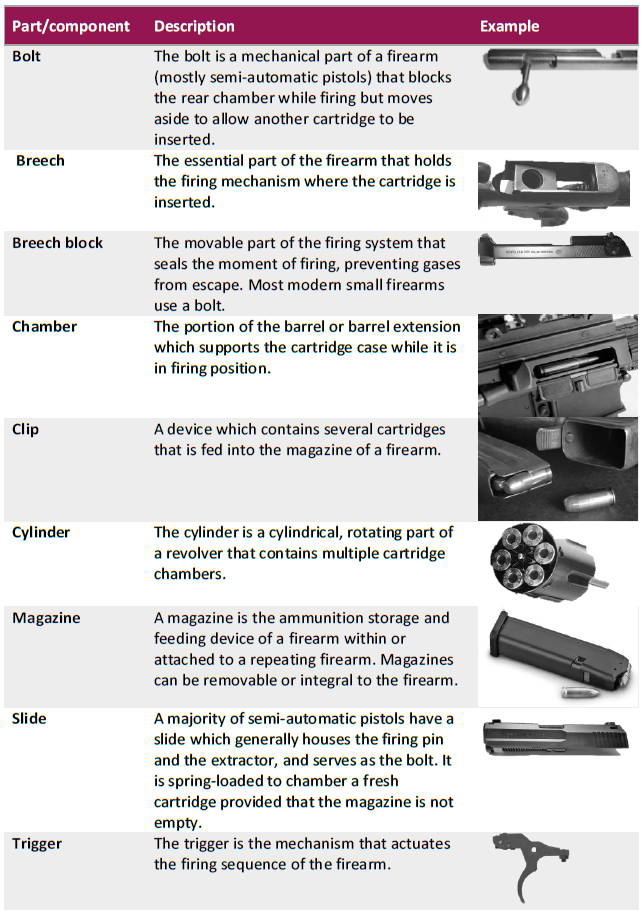
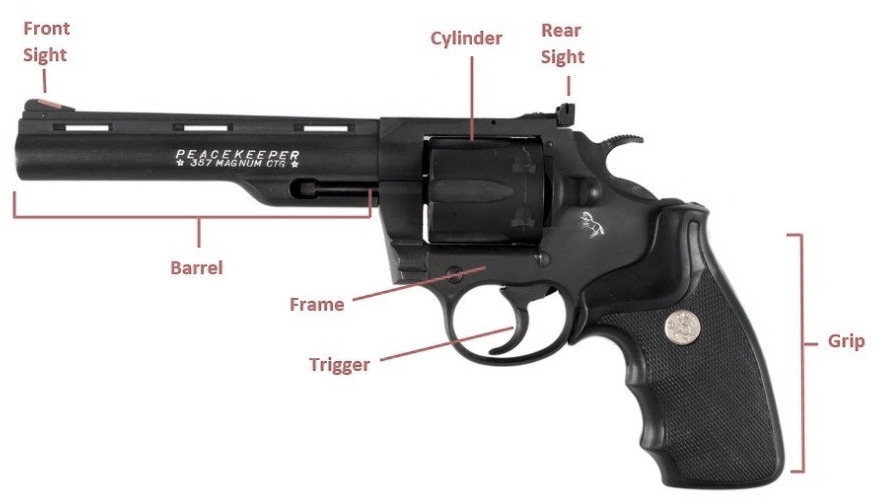
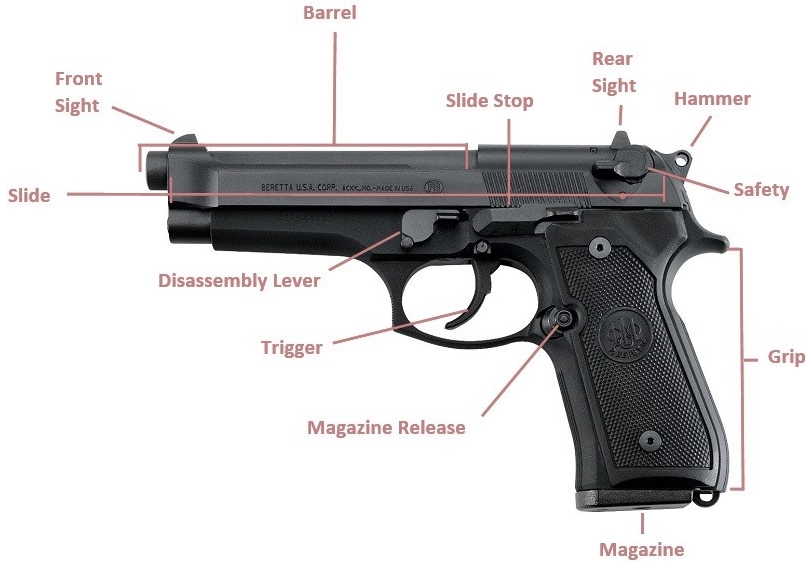

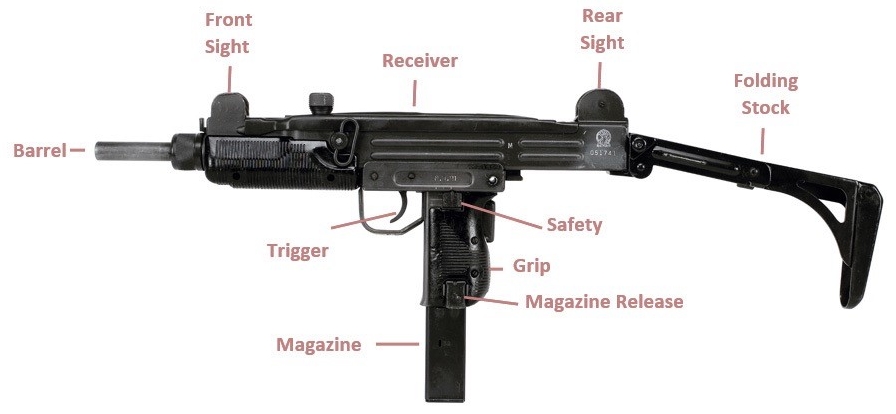
Additional physical properties are usually necessary to identify a firearm or its parts. A serial number is usually indelibly stamped on the firearm, although these are sometimes removed to hide the provenance of the firearm.
Other identifying features are the name of the manufacturer, branding and additional markings added during production, import or acquisition. Detailed aspects of the physical design of the rearm are also important. In general, identification requires a combination of all the physical characteristics of a firearm, and not just the serial number (UNODC 2015, p.82)
To assist lecturers with verification of a firearm's provenance and to aid in their understanding of the physical properties of a firearm, the Small Arms Survey has produced a set of cards which assist both law enforcement and all interested parties, entitled ' Marking, Record-keeping, and Tracing Implementation Support Cards'.
The International Instrument to Enable States to Identify and Trace, in a Timely and Reliable Manner, Illicit Small Arms and Light Weapons defines tracing as being "the systematic tracking of illicit small arms and light weapons found or seized on the territory of a State from the point of manufacture or the point of importation through the lines of supply to the point at which they became illicit."
In other words, tracing is the effective backwards following of the route of a firearm from the end user to its producer. Firearms tracing will help revealing the means, the persons and the methods involved in trafficking of a specific firearm, with an emphasis on the when and how the firearms was diverted from the licit market into the illicit market. This will help institutional actors detect and investigate illicit manufacturing and trading and, based on these findings, propose appropriate legislative, strategic and operational measures.
Unfortunately, firearms tracing is not used at its real potential, mostly because of the reactive approach of law enforcement and judicial actors. They are often focused on solving the main crime and seizing the weapon but neglect the firearm tracing. The initial case is closed but the firearms flow continues to supply firearms that may be used in future similar crimes.
UNODC is proposing a proactive approach, focusing the investigation both on the main crime as well as onto the firearm tracing. In this case, successful tracing can lead to a new investigation of firearms trafficking that can actually stop the firearms flow and prevent firearms distribution that may be used for committing new crimes.
